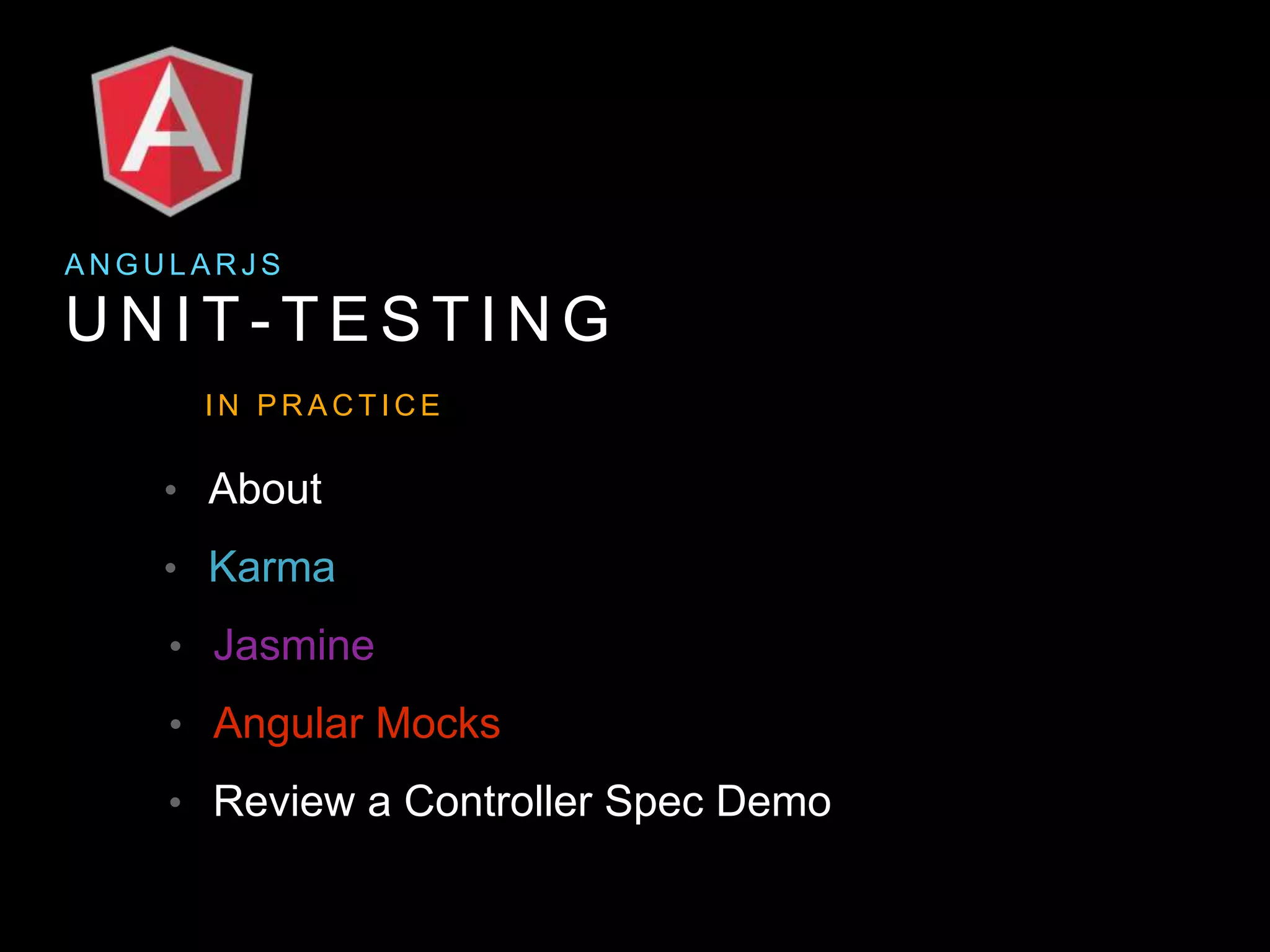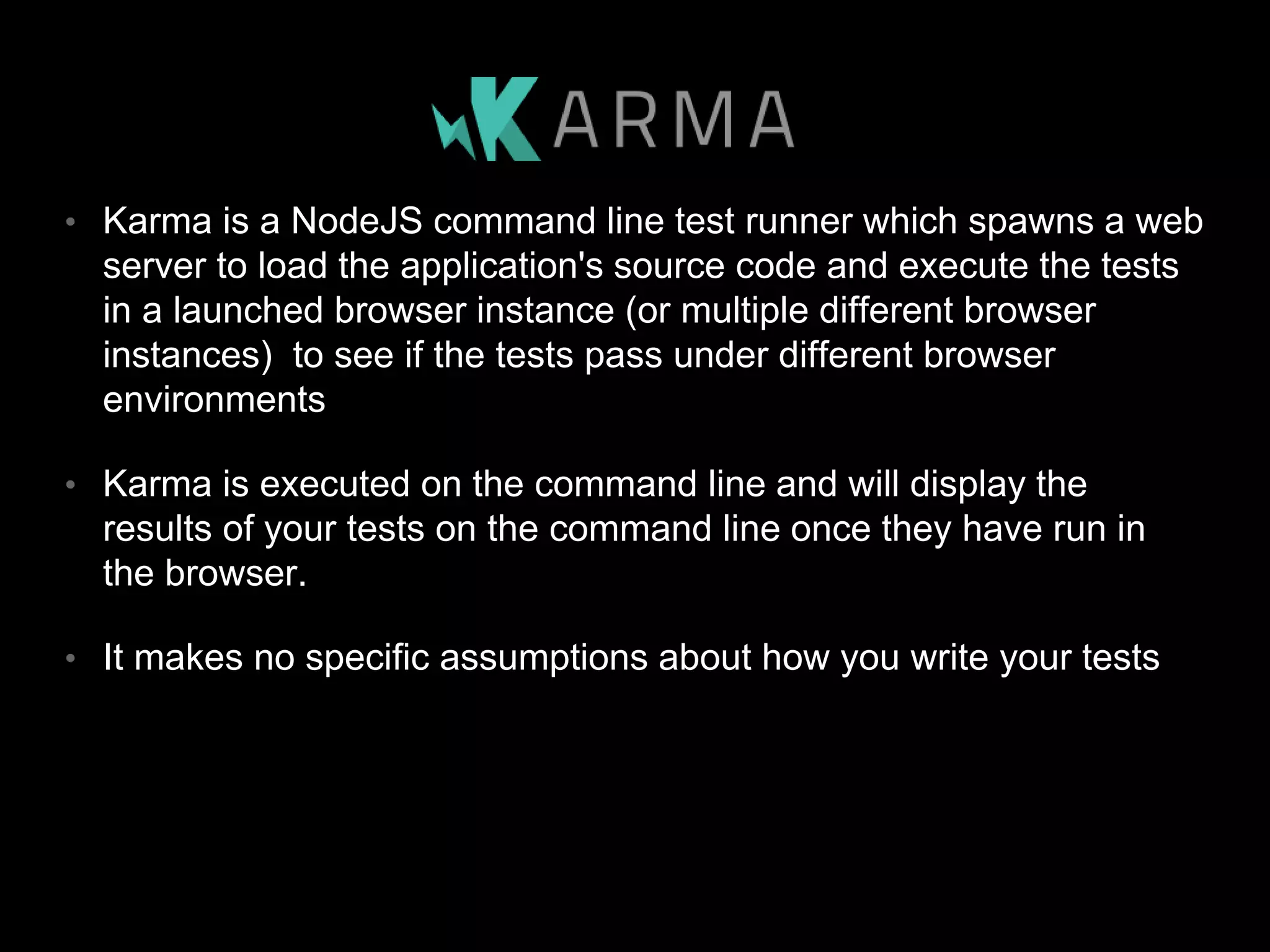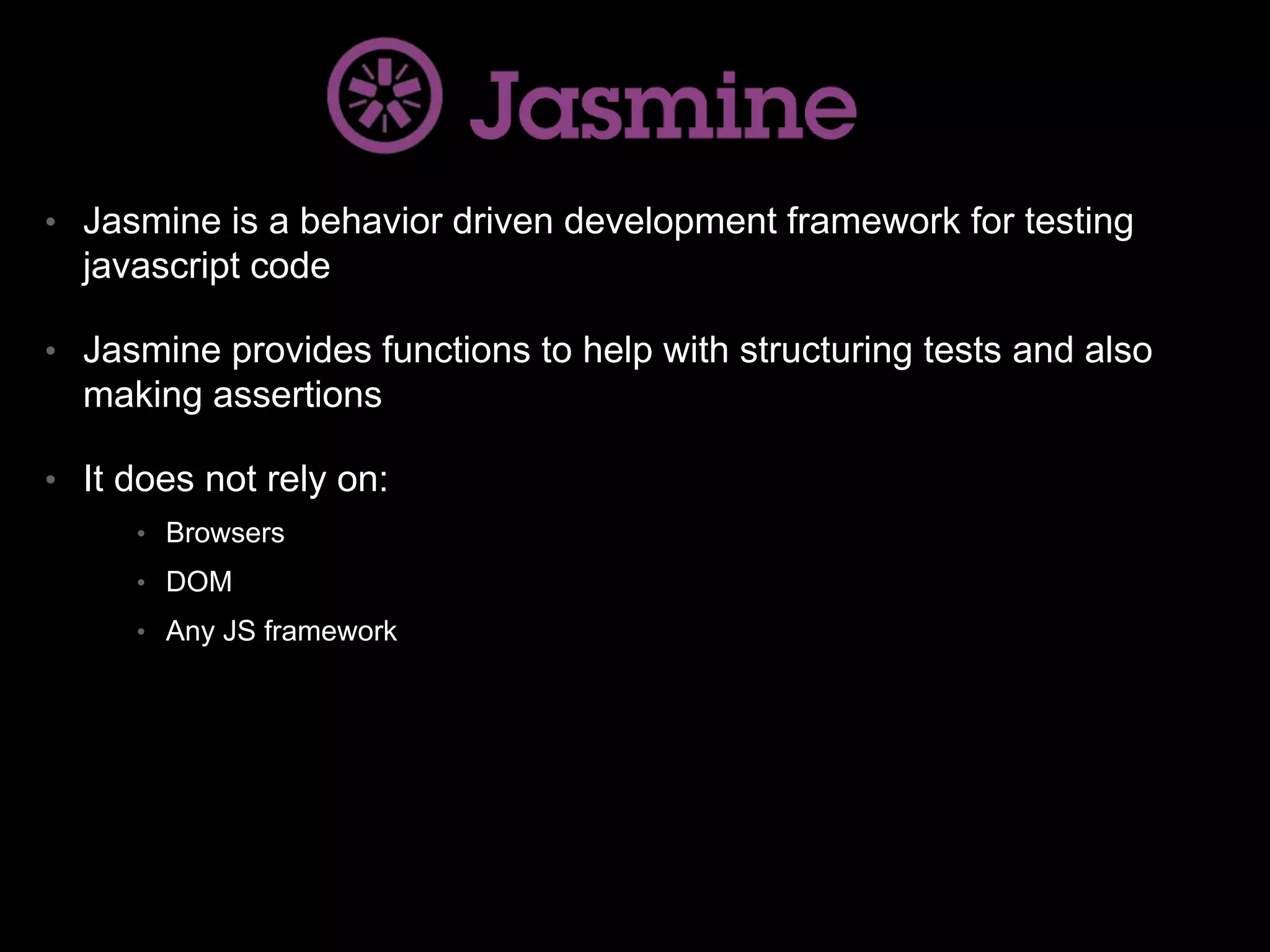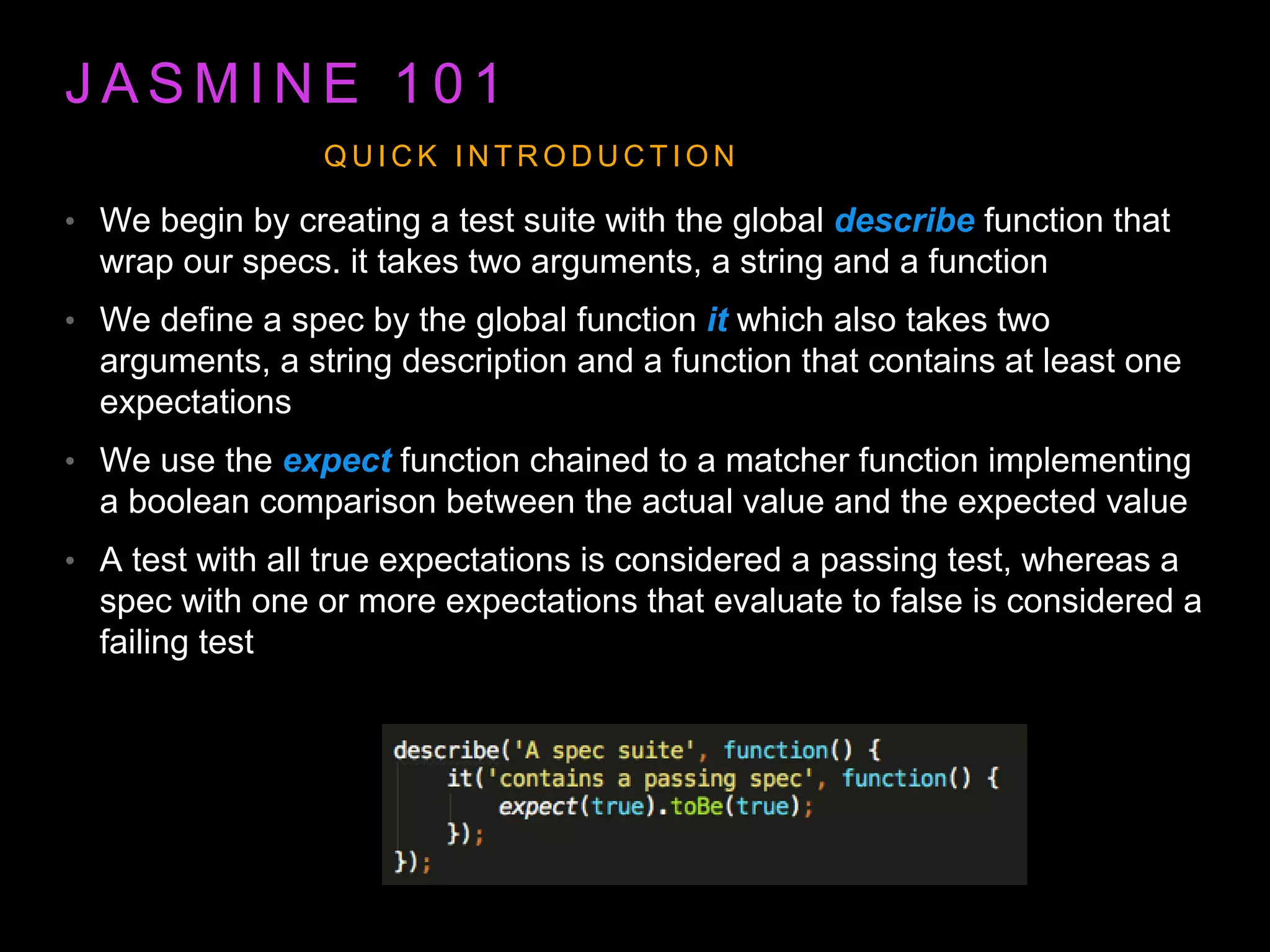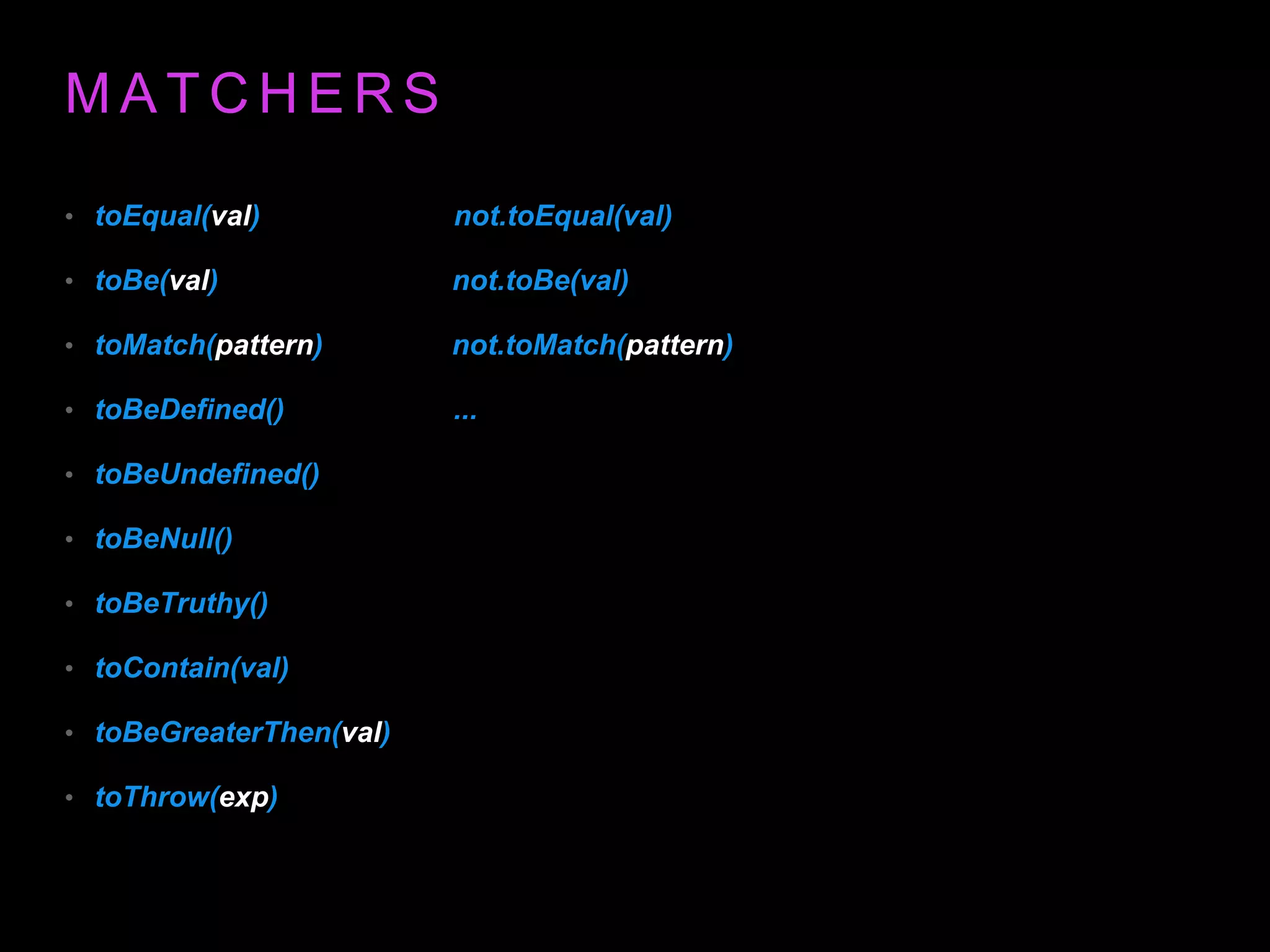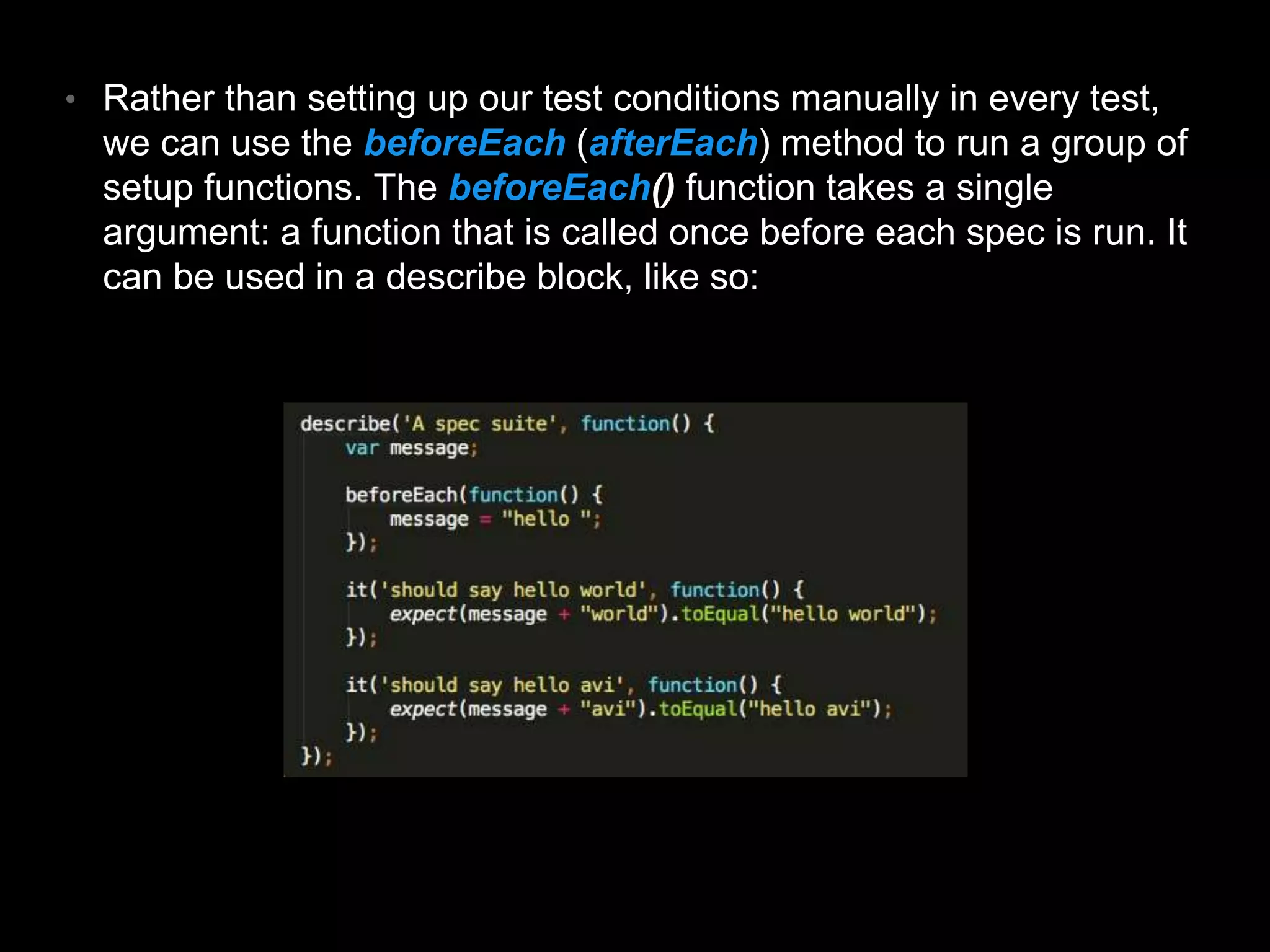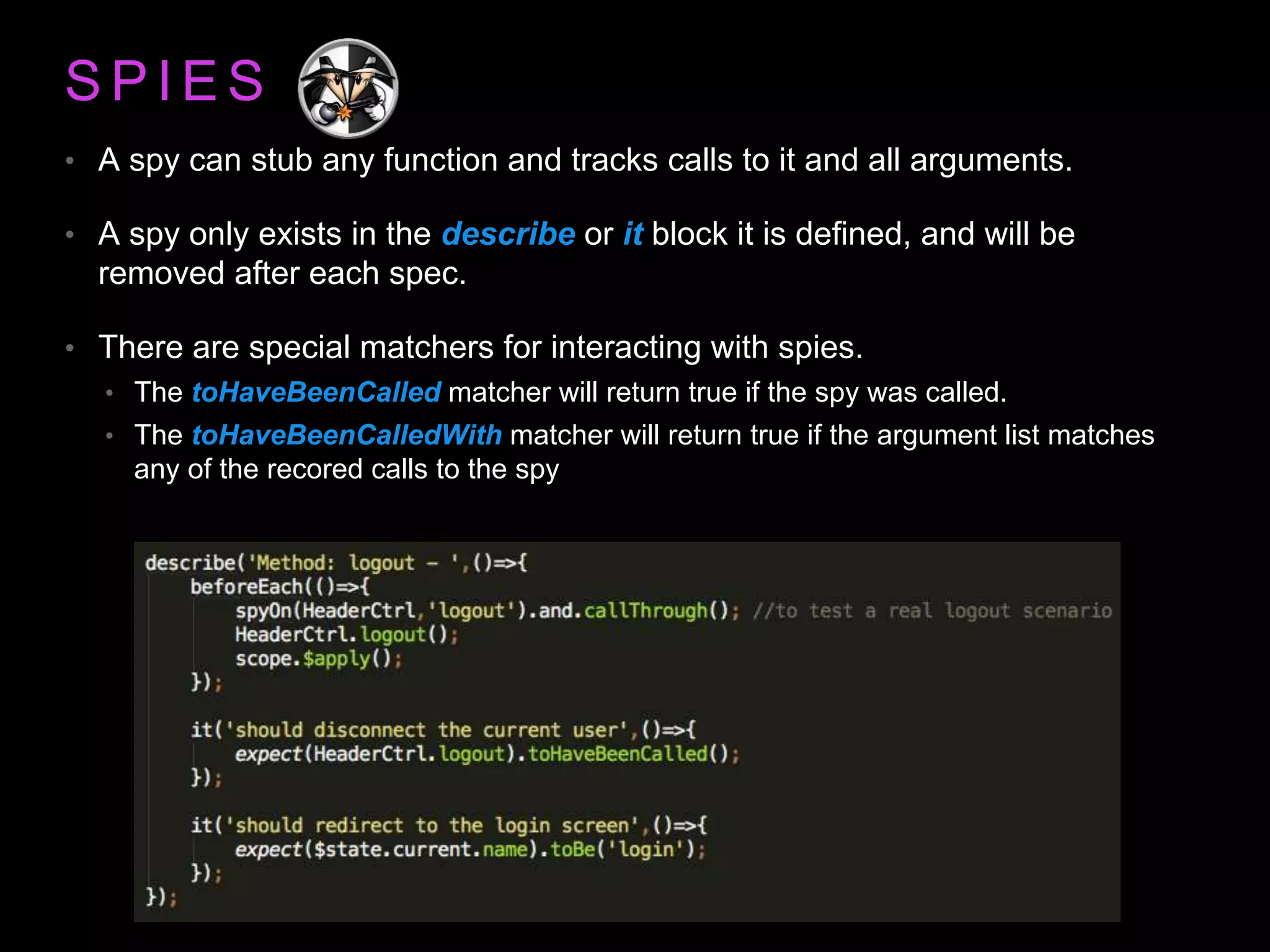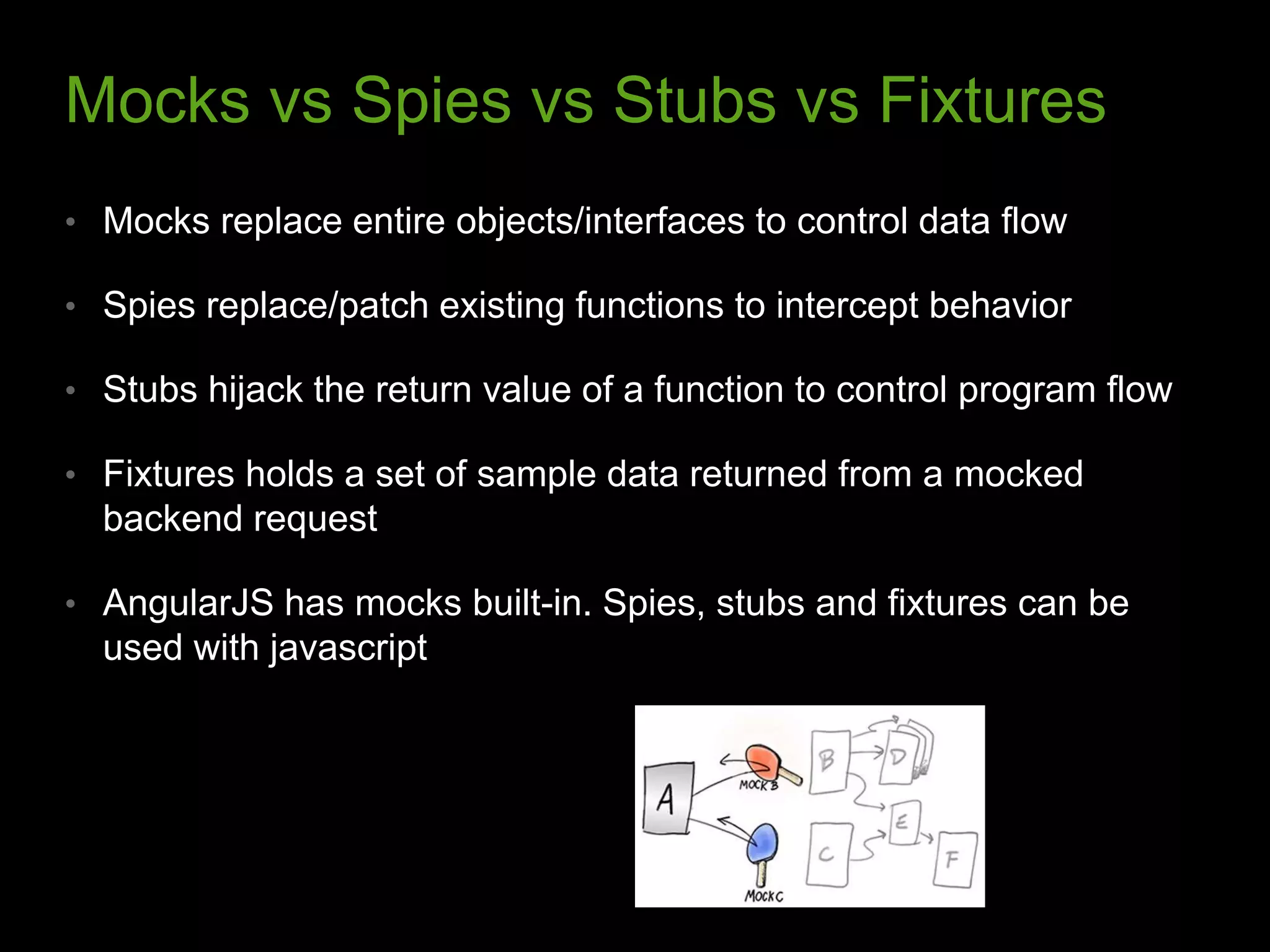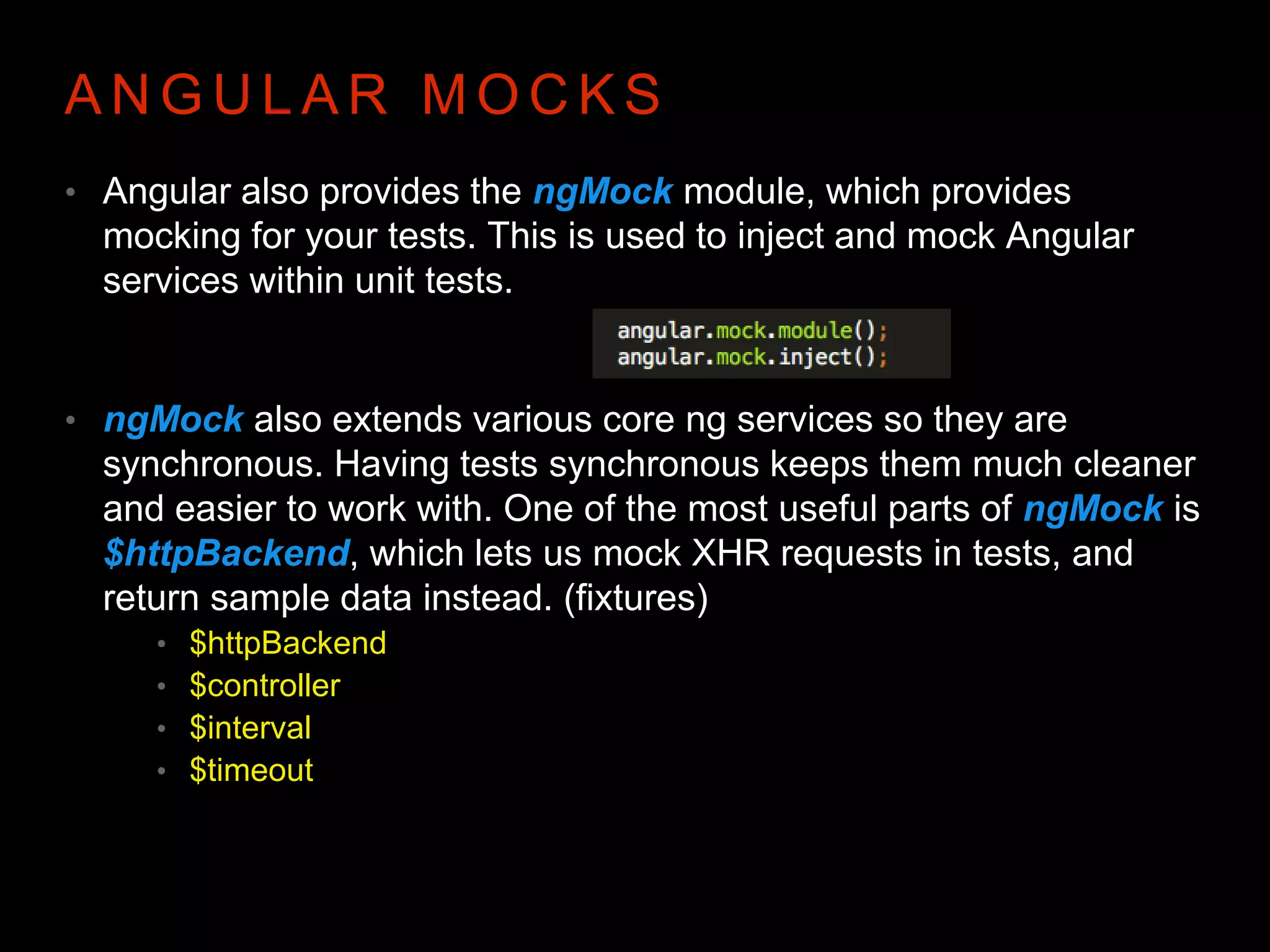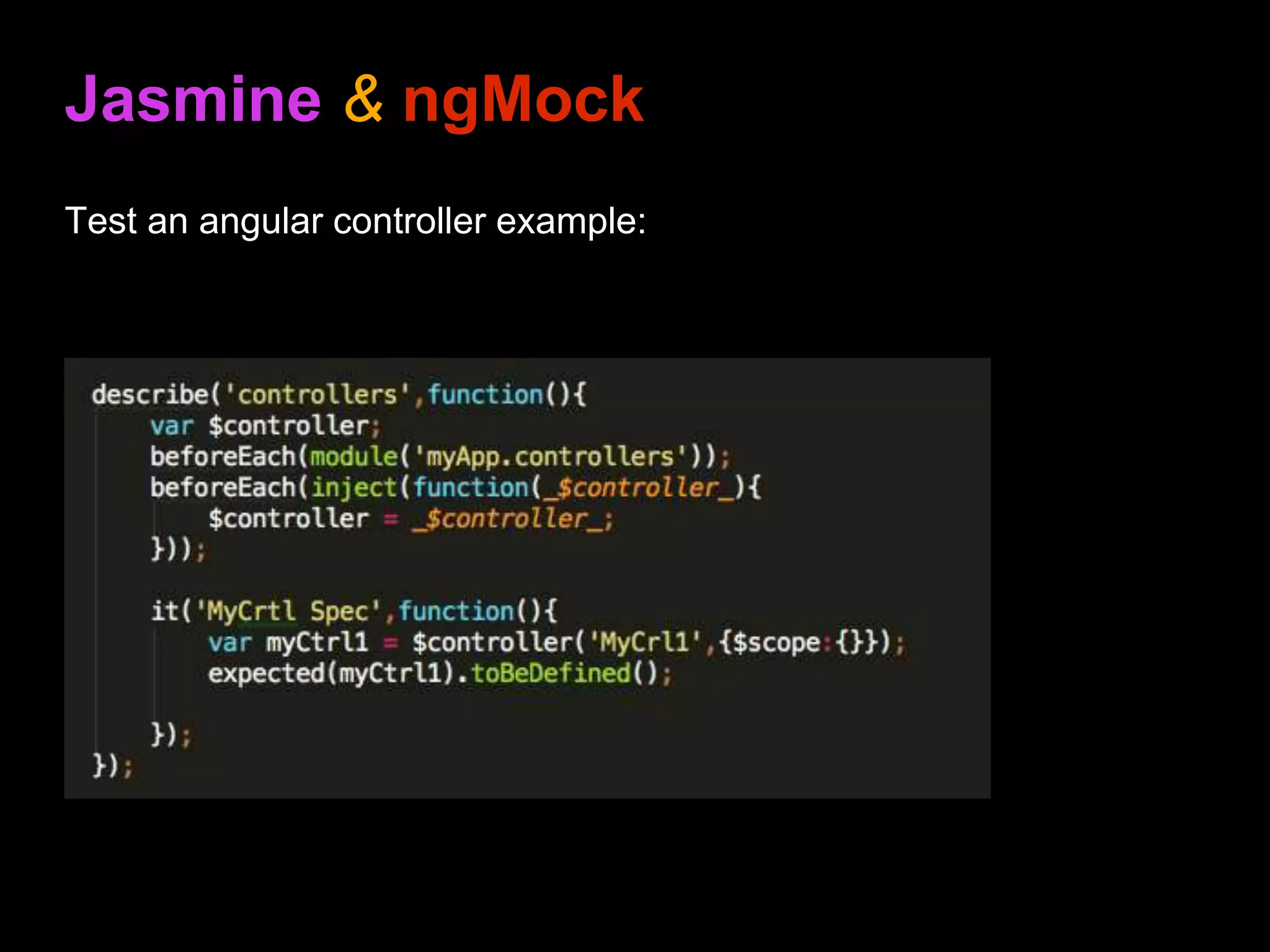This document provides an overview of unit testing AngularJS applications using Karma, Jasmine, and Angular mocks. It discusses how to set up tests using Karma and Jasmine, write specs using matchers and spies, and mock dependencies using Angular mocks. Key points covered include isolating units of code for testing, using Karma to run tests in browsers, the structure of Jasmine specs, and mocking HTTP requests and other services.
